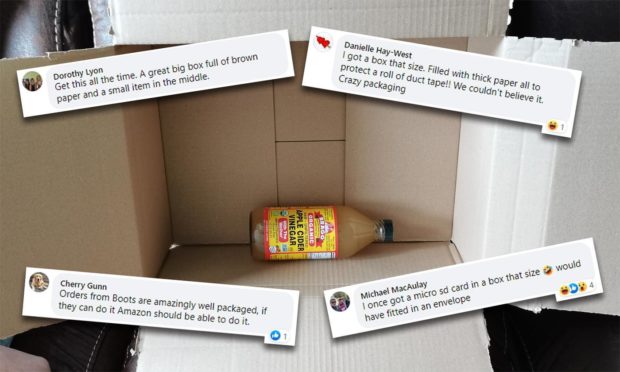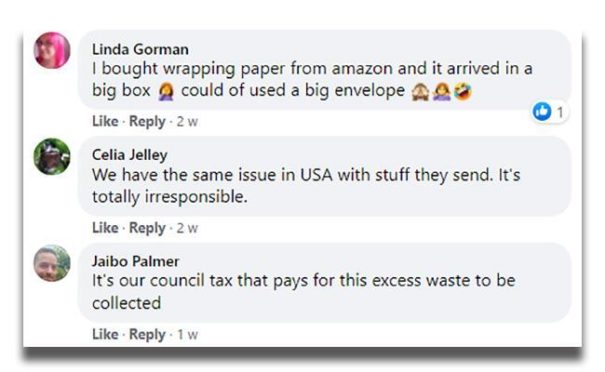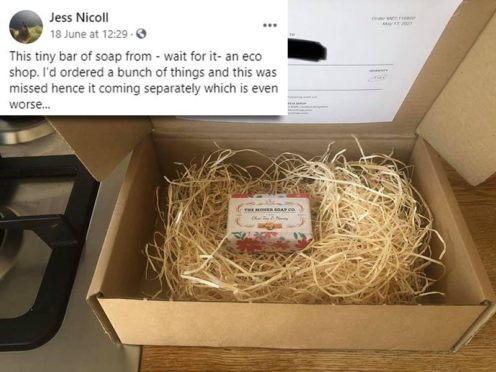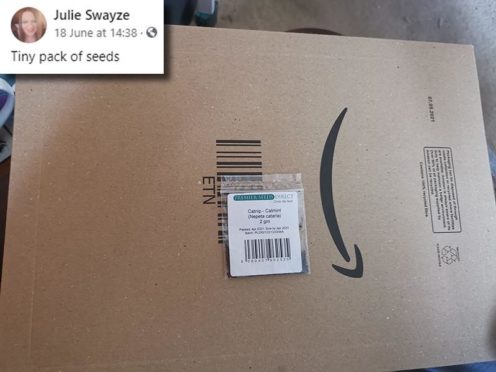Britons love online shopping. During the pandemic sales via our computer screens grew by 48% to £113 billion.
But love, as they say, is blind. And as consumers, we have been turning a blind eye to the environmental cost of online retail, particularly when it comes to packaging.
Nearly three billion parcels were sent in the 2019/2020 fiscal year, with many millions of tonnes of packaging ensuring those goods arrived at our doors in perfect condition.
But it seems that both shoppers and retailers are starting to wake up to the packaging problem, and consumers are getting frustrated.
Online shopping in the north-east
Recently a reader got in touch with us to call for news laws to restrict excessive packaging of online orders after receiving a single vinegar bottle in a large box packed with air-filled plastic bags, cardboard and tape.
He’s far from the only Press & Journal reader who is fed up.
Of course, retailers want to ensure that products arrive in perfect condition.
The average box is tossed, dropped and thrown many times before it reaches the customer, sometimes even being left out in the rain on a damp doorstep.
This is why you often receive a small package inside a relatively large box filled with plastic “air-bags” and packaging peanuts.
Can the Scottish Government take control of wasteful packaging methods?
It may be effective, but it is also wasteful and the Scottish Government are well aware of the growing issue.
A spokesperson said: “The Scottish Government is progressing reforms that will see manufacturers cover the costs of managing packaging waste, creating an incentive to reduce excess packaging.
“Extended producer responsibility for packaging, which we are working to introduce alongside the other UK administrations, will encourage more sustainable packaging design and promote reuse and recycling.
“The Scottish Government has also launched a £70m fund to improve recycling infrastructure, one of the largest single investments in recycling in Scotland. This will help local authorities increase both the quality and quantity of recycling whilst delivering wider environmental benefits.
“Taken together, these actions will tackle waste and help Scotland end its contribution to climate change.”
How can I minimise the packaging I receive?
Meanwhile on the retailer’s side, Amazon has a “Frustration-Free Packaging Program” designed to “produce less waste and put an end to ‘wrap rage’.”
They say envelopes have replaced boxes for smaller shipments. A system has also been introduced to ship products in their original packaging, rather than doubling up.
Amazon also claims to have cut nearly a quarter of a million tons of packaging materials from 2007 to 2017, “avoiding 500 million shipping boxes”.
In practical terms, how can customers reduce the amount of packaging ending up in their recycling bin?
It’s difficult, but here are a couple of ideas:
- Buy less. Yes, it’s that easy. Do you really need this item? Could you get it in a local store?
- Combine orders. When ordering multiple items, request everything be sent together or in as few packages as possible.
- Give feedback. If you receive an order with an excessive amount of unnecessary packaging, be sure to let the retailer know. Likewise, if you were pleased with minimal or zero-waste packaging, let them know too.
- Plastic-free shopping. Also consider buying from companies that adhere to strict zero-waste delivery policies, like EcoRefill.



